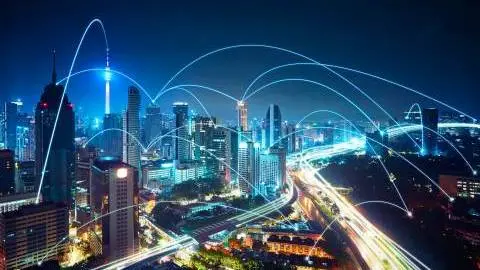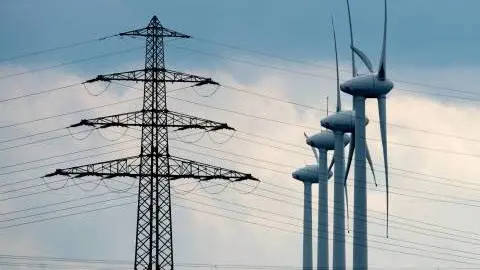Energy Outlook: Solid growth for wind and solar amid energy crisis
Today's energy crisis is a wake-up call for Europe, which is increasingly dependent on suppliers outside the continent for gas. That’s why we expect the focus on renewables to be balanced with the security of supply and affordability
European wind and solar markets expected to grow
The European wind and solar markets are expected to provide solid growth of 8% and 12%, respectively, in 2022, in terms of capacity additions.
Growth in the solar market is highest for large-scale solar plants (+14%), while small-scale rooftop solar is set to increase by 11%. In the wind market, growth is highest in the offshore market (+16%) as some large offshore wind parks will come online in 2022. The onshore wind market is less subject to the timing of large projects and provides steady growth of 7%.
Growth in solar outpaces growth in wind
Annual growth in installed capacity for solar and wind energy in Europe

Growth is driven by small-scale rooftop solar and onshore wind farms
In absolute terms, capacity additions are largest in the onshore wind sector (+14 GW) and for small-scale solar projects (+12 GW).
In the offshore wind sector, 4 GW of capacity will be added in 2022. That is relatively small compared to the other segments, but policymakers in the Nordics, UK, Ireland, Germany and the Netherlands continue to work on special planning for offshore wind farms and grid infrastructure. So, much more is about to happen in the coming years for offshore wind farms.
Most capacity is added in onshore wind and small scale solar projects
Added capacity in Europe in gigawatt (GW)
Anticipated €50bn investment in wind and solar
All in all, we expect to see 39 GW growth in the combined wind and solar market. This equals €50bn of investment at current capex costs for the different wind and solar projects across Europe.
The energy crisis reveals the shortcomings of the ‘sustainability only focus'
Climate change calls for a radical new future energy system that heavily depends on renewable energy and reduces unabated fossil fuels. Solar and wind power will be driving future power systems in a zero-carbon economy, which Europe aims to reach by 2050.
To meet these climate goals, policymakers across Europe have shifted their focus almost entirely to the sustainability aspect of the energy system. The focus has been on phasing out coal- and nuclear-fired power plants, reducing European oil and gas production and increasing power generation from wind turbines and solar panels.
As a result, the supply-side of the energy system has been reformed much faster than the demand-side. Europe now heavily depends on natural gas imports from Russia and Norway and liquefied natural gas (LNG) out of the US and Qatar. That worked fine in abundant energy markets, but not in the current energy crisis for which there is no quick fix.
In short, old energy systems are being taken down faster than the demand for fossil fuels has declined and new renewable energy systems are being built. Investment in upstream oil and gas is stubbornly low and hence commodity and power prices are expected to remain high in the coming years.
Energy crisis calls for a rebalancing of priorities
Weighing of the three main pillars of energy systems: sustainability, reliability and affordability

Calls for a rebalancing towards security of supply and affordability
The energy crisis has put the other two pillars of the energy system; reliability and affordability, in the spotlight again.
The reliability of energy systems is no longer a guarantee, particularly in the case of a severe and prolonged winter, be it in Europe, Asia or both. And bankruptcies of energy providers could be a blow to the perceived reliability of the energy system for energy consumers, even if the energy system remains functioning.
The affordability of energy needs little explanation in the current crisis. A perfect storm occurred, with average power prices last year rising eightfold and gas prices sevenfold.
The current energy crisis calls for a rebalancing of priorities: from a sustainability, or ‘renewables only’ approach towards a balanced approach that includes the reliability and affordability of the European energy systems.
In that respect, today’s energy crisis is a wake-up call. Gas consumption in Europe is becoming increasingly dependent on suppliers outside the European continent. As the ‘renewables only’ approach is not possible, Europe needs to develop more green energy alternatives, such as hydrogen. Well-balanced and coordinated energy transition plans from member states are needed to solve Europe’s energy supply challenges.
Such a rebalancing does not mean that growth in wind and solar will slow down. In fact, coordinating the coal and nuclear phase-out across countries, keeping closed coal plants available as a backup instead of tearing them down, and the building of new gas-fired power plants with carbon capture and storage could in fact enable an acceleration of growth in renewables.
This publication has been prepared by ING solely for information purposes irrespective of a particular user's means, financial situation or investment objectives. The information does not constitute investment recommendation, and nor is it investment, legal or tax advice or an offer or solicitation to purchase or sell any financial instrument. Read more
Download
Download article
26 January 2022
Looking forward to looking back This bundle contains 7 Articles

